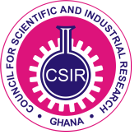Please use this identifier to cite or link to this item:
https://csirspace.foodresearchgh.org/handle/123456789/1603Full metadata record
| DC Field | Value | Language |
|---|---|---|
| dc.contributor.author | Mintah, B. K. | - |
| dc.contributor.author | Dabbour, M. | - |
| dc.date.accessioned | 2025-02-21T11:03:13Z | - |
| dc.date.available | 2025-02-21T11:03:13Z | - |
| dc.date.issued | 2023 | - |
| dc.identifier.uri | https://csirspace.foodresearchgh.site/handle/123456789/1603 | - |
| dc.description | Article | en |
| dc.description.abstract | Interest in alternative food sources to address the challenges of feeding a growing global population while taking into account sustainability and resource use has increased lately. One such category of alternative food source (food of the future) is edible insects, which (globally) are consumed by many cultures. They are not only considered sustainable, but also nutritious food source (1–3), due to their rich protein, vitamin (including B vitamins), healthy fat, and essential mineral (e.g., zinc—Zn, and iron- Fe) contents. Insects have, as well, several other benefits to humans and the environment. Compared to conventional livestock, the raising and/or breeding of insects requires significantly fewer or less resources (e.g., water, and land) (4). They latently and efficiently convert feed (organic/kitchen waste) into edible and nutritious body mass (5), contributing to reducing environmental waste. The acceptance of insects as food source (by consumers worldwide) is also gradually increasing, driven by their nutritional, health and environmental benefits, as well as gastronomic advances. However, cultural and individual perceptions linked to the association of insects to waste/pests still pose a challenge to their complete adoption, not overlooking the flip-feeling of disgust. Consequently, researchers are channeling their efforts into improving the efficiency and hygiene of insect farming, isolating components like protein, developing and optimizing insect-based food/functional food products, and addressing potential risk associated with allergens and other contaminants. It follows that, the widespread acceptance of insects as food that has the potential to diversify global food sources in few years to come, will not only depend on factors such as food processing technologies, advances in farming, individual or cultural perceptions, but also education/training, and regulatory framework. This Research Topic, therefore, focused on multiple subjects on insects as future food source, with collection of articles on safety, processing, and novel technologies and strategies toward increasing their application and consumption. The articles discuss the digestibility and quality of insect protein, willingness to consume edible insects, refining the biomass of some insects into valuable fractions using novel and conventional methods, and feed for insect farming. Considering the importance of protein quality measurement, as in helping to know how well proteins would meet the physiological needs of humans, Hammer et al. used an in vitro digestion technique based on indispensable amino acid scores to assess the quality of Acheta domesticus andTenebrio molitor protein, while considering the influence of foodpreparation and processing as well. Compared to chicken breast, their observation pointed to it that, | en |
| dc.language.iso | en | en |
| dc.publisher | Frontiers | en |
| dc.subject | insects farming | en |
| dc.subject | bioactivity | en |
| dc.subject | novel technology | en |
| dc.subject | protein | en |
| dc.subject | entomophagy | en |
| dc.subject | ultrasound | en |
| dc.title | Editorial: Food of the future: insects | en |
| dc.type | Article | en |
| dc.journalname | Frontiers in nutrition | en |
| Appears in Collections: | Food Research Institute | |
Files in This Item:
| File | Description | Size | Format | |
|---|---|---|---|---|
| Editorial_Mintah_B_K_et_al.pdf Restricted Access | Article | 88.85 kB | Adobe PDF | View/Open Request a copy |
Items in CSIRSpace are protected by copyright, with all rights reserved, unless otherwise indicated.
